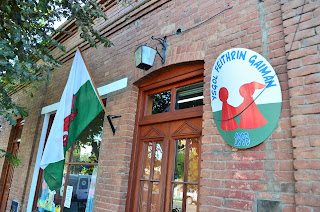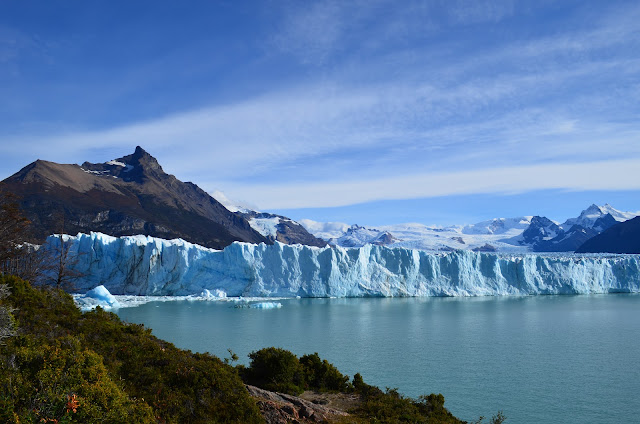 We organised the tour through Trout and Wine, a brilliantly named and professional company. We were in a group with just one other couple and a friendly and knowledgable guide. We travelled towards the Uco valley and made our first stop just outside it, at Pulenta. It is a small winery with a 135 hectare vineyard. We were shown around whilst enjoying a glass of La Flor Sauvignon Blanc, which was crisp and grassy and thankfully available in the UK. The winery is beautiful, very stark and minimalist. In the tasting room, we passed round glasses of coffee, grass, vanilla, rose petals and more, which we had to blindly smell and guess the contents. We were good at this game. We were less good at picking out the individual aromas in the La Flor Malbec, Reserve Cabernet Sauvignon and Gran Reserve Cabernet Franc, but we were good at drinking them. They were all delicious, especially the Cabernet Franc which is a new grape for us. We've had it a lot in combination with other grapes at home, but never 100% as this one was.
We organised the tour through Trout and Wine, a brilliantly named and professional company. We were in a group with just one other couple and a friendly and knowledgable guide. We travelled towards the Uco valley and made our first stop just outside it, at Pulenta. It is a small winery with a 135 hectare vineyard. We were shown around whilst enjoying a glass of La Flor Sauvignon Blanc, which was crisp and grassy and thankfully available in the UK. The winery is beautiful, very stark and minimalist. In the tasting room, we passed round glasses of coffee, grass, vanilla, rose petals and more, which we had to blindly smell and guess the contents. We were good at this game. We were less good at picking out the individual aromas in the La Flor Malbec, Reserve Cabernet Sauvignon and Gran Reserve Cabernet Franc, but we were good at drinking them. They were all delicious, especially the Cabernet Franc which is a new grape for us. We've had it a lot in combination with other grapes at home, but never 100% as this one was.  Next we went to La Azul, a tiny family-run winery with three different lines of wines.The production is all done in one room, as is the tasting. We tried glasses of Sauvignon Blanc, Malbec, Cabernet Sauvignon and lastly were given a taste of 100% Malbec straight from the barrel. This wine will not be bottled until 2015. All the wines were delicious but the last Malbec was our favourite.
Next we went to La Azul, a tiny family-run winery with three different lines of wines.The production is all done in one room, as is the tasting. We tried glasses of Sauvignon Blanc, Malbec, Cabernet Sauvignon and lastly were given a taste of 100% Malbec straight from the barrel. This wine will not be bottled until 2015. All the wines were delicious but the last Malbec was our favourite. Good food, good wine and spectacular views of the foothills of the Andes. A great day. How could it not be?
Kate
















































